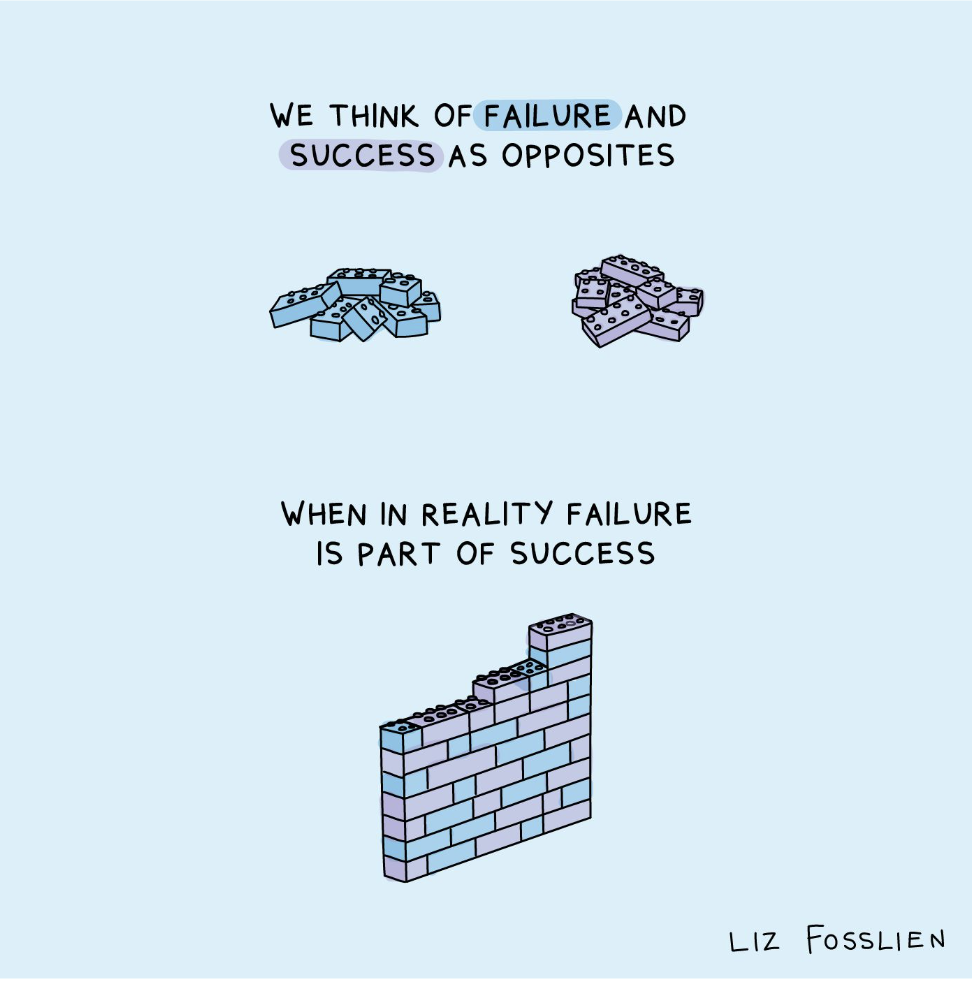We naturally resist change, but it is not a bad thing!
Where there is change, there is resistance.
Which motivated change-maker hasn’t, every now and then, felt frustrated by the resistance that their ambitious project has faced? And no wonder: resistance often seems to slow down important projects and cause a lot of hassle where amazing things should be happening instead.
But today, I would like to look at resistance from a different angle. Where does resistance actually stem from, what we can learn from it, and how can we keep driving necessary changes despite it?
Change is difficult because our brains are programmed to be lazy
The first reason for our resistance lies within our brains: change is, according to scientific research, an undesirable state for our brains.
As research conducted by Columbia Business School puts it, change is hard “because our brains are wired for laziness”.
“They take in countless pieces of data at any given point, and they desperately try to make sense of this information by engaging in shortcuts such as pattern recognition.”
Change blows these patterns away in the air and forces our brains to use valuable energy in adjusting to the new status quo. No wonder our brains shout “No!” as soon as some form of change is on the horizon!
When we look at examples from everyday life, we see that it’s not even the nature of the change that often generates resistance, but the simple existence of change. When quick messaging apps became available and were adopted in offices alongside email, many professionals found the transition tricky and took their time to find ways to use these new applications. This is resistance to change. It’s hard. It takes effort. We are lazy, so we resist.
However, if Slack, WhatsApp and chat tools were suddenly removed from offices, the same people would likely find it hard to go back to the use of email only – simply because the new patterns they had adopted would have to be changed again. More work for us lazy humans!
Resistance stems from the adoption curve
Given that change is scary and requires additional brain power (quite literally!), resistance can seem more understandable. It’s a reflex to an external change.
But why does it seem that some people get on board new situations much faster than others if we all share the same brain physiology?
One answer can be found in the Adoption Curve. It’s often used to describe the adoption of new technologies, which is led by “Innovators” and “Early Adopters” before the “Early Majority” hops on board.
Later on, they are followed by the “Late Majority” and “Laggards”. By this time the Innovators and Early Adopters have already jumped onto the next thing.
People aren’t that different at work; within any team and organisation, there are likely people from all five groups. Innovators and Early Adopters find it easy - and even exciting - to grab their bags and climb aboard the transformation train.
At the same time, the Late Majority, and especially the Laggards, might still be stuck in the station café throwing wishful glances at the train timetable, hoping for the train to be severely delayed, completely rerouted or simply cancelled.
Where an employee or leader sits on the adoption curve will impact the level of resistance to any change.
Mindset impacts the speed of change
Another concept that can help leaders and change-makers understand resistance is that of mindset.
The concept of a growth mindset and fixed mindset has been popularised thanks to the work of Professor Carol Dweck.
People equipped with a growth mindset believe in their ability to learn new things, develop themselves and spring back from difficult situations and experiences.
“A growth mindset means that you thrive on challenge, and don’t see failure as a way to describe yourself but as a springboard for growth and developing your abilities”, summarises an article published at Western Governors University.
On the other hand, people who have a fixed mindset tend to think we are born with a fixed set of skills and abilities that cannot be significantly developed later in life. For people equipped with a fixed mindset, change can lead them to the question “Can I master new skills needed, as I don’t know how to do that already?”
“Change Resistance is the reaction by the organisation, department or employees when they perceive that an organisational change coming their way could be a threat to them”, shares change management expert, Peter Gallagher.
Nevertheless, what can leaders do to drive change?
Of course, taking resistance as a sign to withdraw from change is rarely a good option. In a world that is changing faster than ever before, employee engagement is crucial in reacting to those changes and keeping organisations relevant and modern.
But as inevitable as change is, resistance isn’t going to go anywhere either. That is why, to stay operational, leaders must embrace resistance instead of fighting it.
The other day I came across Liz Fosslien’s illustration on success and failure on LinkedIn which could also be used to illustrate the relationship between change and resistance.
Fosslien’s illustration uses different coloured Lego bricks as an analogy for failure and success. She points out that, even though we often see these two phenomena as opposites, they ultimately contribute towards building the same wall of success in the end.
“Failure is part of success”, she observes.

Navigate resistance with elegance
This is exactly how change and resistance are linked together: resistance is not something to avoid, it is an integral part of change, just like failure is an inescapable element of success. It’s not a “necessary evil” but a crucial ingredient that shows the path forward.
Writer Ryan Holiday turns the tables and looks at resistance from a different angle in his book The Obstacle is the Way. For him, obstacles - such as change resistance - are an integral part of any solution.
“When you have a goal, obstacles are actually teaching you how to get where you want to go - carving you a path.”
According to Holiday, there are three ingredients that help drive meaningful change amidst hardship: “Perception, Action, and the Will. It begins with how we look at our specific problems, our attitude or approach; then the energy and creativity with which we actively break them down and turn them into opportunities; finally, the cultivation and maintenance of an inner will that allows us to handle defeat and difficulty.”
For teams, this can mean that team members who are fast to adopt new systems and habits and whose growth mindset allows them to swim in the sea of change with grace, can support and encourage their colleagues who are slower to get on board with new things.
On the other hand, more change-resistant people can voice concerns and shine a light on potential obstacles that faster adaptors might have overlooked, hence contributing to long-lasting and sustainable changes.
When dealing with change, trust the process
In Collaborative Art® team-building experiences, I see this in a very concrete way. Some people jump in headfirst (figuratively, though) while others take their time and only pitch in at later stages of the project. All roles are needed and contribute to the end result.
One time, I worked with a group of directors, many of whom seemed to be sceptical about an art-based team-building experience. They embarked on the experience with some resistance, but by the end of the session, we even had an amazing, slam-styled presentation from the team. The results showed their enjoyment and full-hearted involvement in the creative process. When teams trust the process, you can transform doubt into pride, and process into progress.
Like going through the creative process, navigating a change requires trust in the process, especially when it feels uncomfortable. I find this quote from The Obstacle is the Way encouraging:
“You’ve got to do something very difficult. Don’t focus on that. Instead break it down into pieces. Simply do what you need to do right now. And do it well. And then move on to the next thing. Follow the process and not the prize. You’re never going to find perfection. Instead, do the best with what you’ve got.”
How about you? Does change make your skin crawl with fear - or positive anticipation? How are you tackling change resistance, and have you seen its hidden blessings? Share your lessons learned and best practices in the comments below or send me a message so we can discuss and learn from one another in person!
About the Author
Steph Fonteyn is an internationally exhibited artist, corporate facilitator and the founder of Collaborative Art® team building. She ties together the fine threads of creativity, courage and leadership to provide her clients with transformative team-building and workshop experiences. Her mission is to empower professionals worldwide to tap into their inherent creativity to be better leaders and bring about change.
Steph founded Collaborative Art® in 2011 to unite teams around a shared vision through art, and she has developed innovative techniques to unlock both the creative and collaborative potential in teams. With her artistic talent, public speaking skills, HR experience, and team-building expertise, Steph has become a respected figure in creativity, communication, and leadership.
As an award-winning public speaker, she has shared her expertise on creativity and courage at various events, including TEDx in 2015.
Steph splits her time between creative artwork and supporting companies through creative, collaborative team-building activities. She lives in Switzerland, near Geneva.
